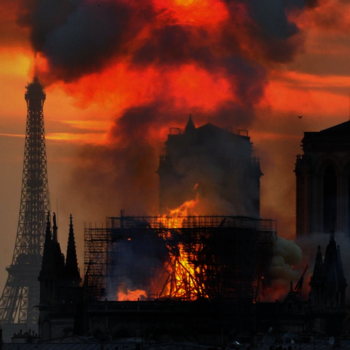The world's buildings are old, unsafe and inefficient
28 November 2019 @ 12:00am Equity Crowdfunding Investors

In April this year, the 856-year-old Notre Dame de Paris cathedral burst into flames after a structural fire broke out beneath its roof. While investigations into the cause of the fire are still underway, a malfunctioning electrical system has been suggested as a possible cause1.
In 2017 a malfunctioning refrigerator housed in West London’s 24 storey Grenfell Tower block was responsible for the deaths of more than 72 people2. These are just some of the latest examples of electrical systems sparking disaster.
How many more catastrophic events need to take place before the world starts to take monitoring critical infrastructure seriously?
So why does it keep happening?
One of the biggest challenges facing facilities managers today is the lack of tools they have available to them to ensure machinery is operating efficiently and as it is expected to. Compounding this global problem is the lack of visibility that decision makers currently have about the operational performance of their company’s machinery.
In this, there are essentially four main challenges that these facilities managers currently face.
- Catastrophic Shutdowns
Unplanned outages are experienced by more than 80% of businesses3. When critical workplace infrastructure fails, it can result in costly shutdowns, fires and at worst casualties. Not only this, but productivity and day to day workplace operations can be seriously impacted.
- Expensive Operating Costs
Facility expenses represent one of the largest costs for two-thirds of businesses, with energy comprising 23% of facility expenses, according to IBM’s CFO Research Services.
- Poor Sustainability
Buildings and construction are responsible for 36% of global final energy consumption and nearly 40% of total direct and indirect CO2 emissions4.
- Limited Operational Visibility
Equipment failure can cause a loss in productivity and without being able to “see” machines, the key decision makers have limited insight into operational efficiencies.
What’s being done to prevent this?
To help manage and overcome these challenges, Ecocentric has developed Numen – advanced AI designed to make the world’s buildings sager, more energy efficient and more sustainable. Numen helps asset owners to better manage the machines and electrical systems within their buildings by providing real-time performance monitoring, fault protection, electrical fire prevention and energy optimisation.
Ecocentric believes that their Numen technology could have prevented the fires at Notre Dame and Grenfell – and they are on a mission to ensure the world’s buildings don’t suffer the same fate.
Ecocentric’s equity crowdfunding offer is now live via the OnMarket platform. Ecocentric have already raised $3.2 million from sophisticated and professional investors and is now offering all investors the opportunity to join the energy data revolution, Invest now!
1https://www.theguardian.com/world/2019/apr/19/notre-dame-fire-cause-may-have-been-electrical-official
2https://www.usatoday.com/story/news/world/2017/06/23/grenfell-tower-fire-started-in-refrigerator/422746001/
3https://www.evolven.com/blog/downtime outages and failures understanding their true costs.html
4https://www.iea.org/topics/energyefficiency/buildings/